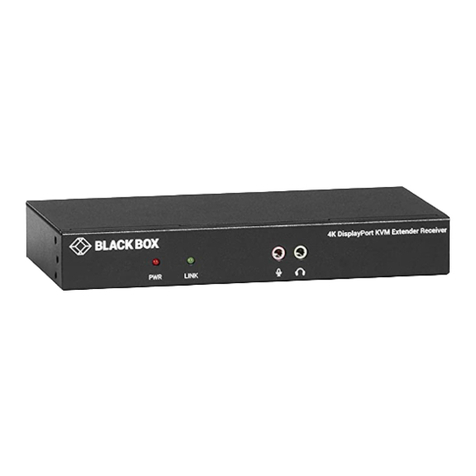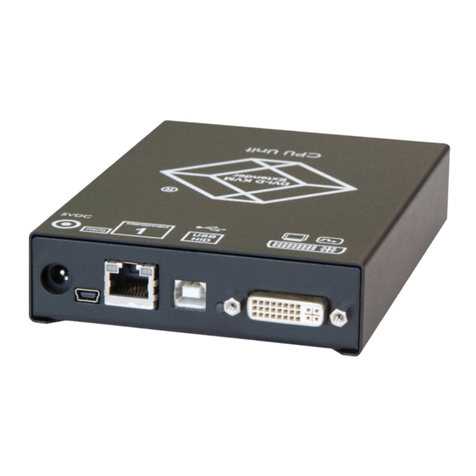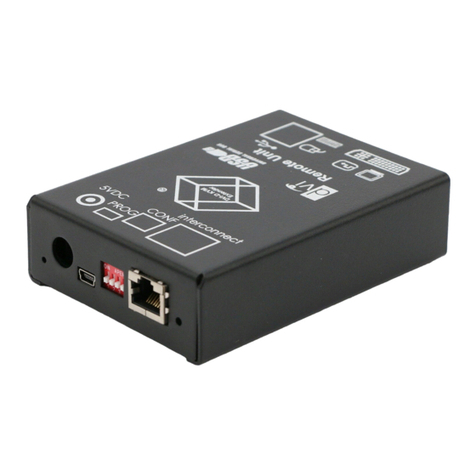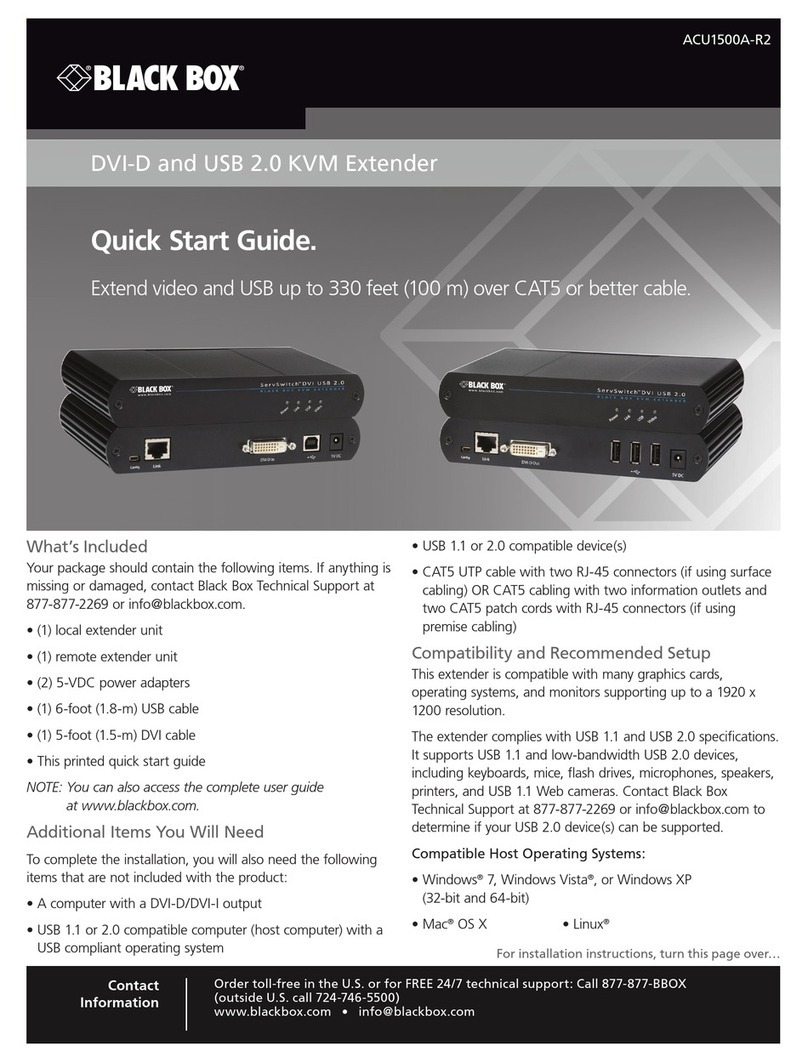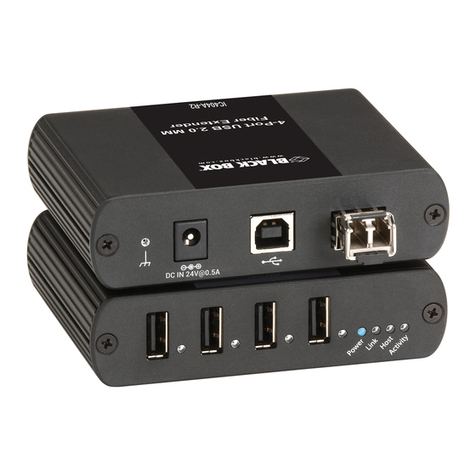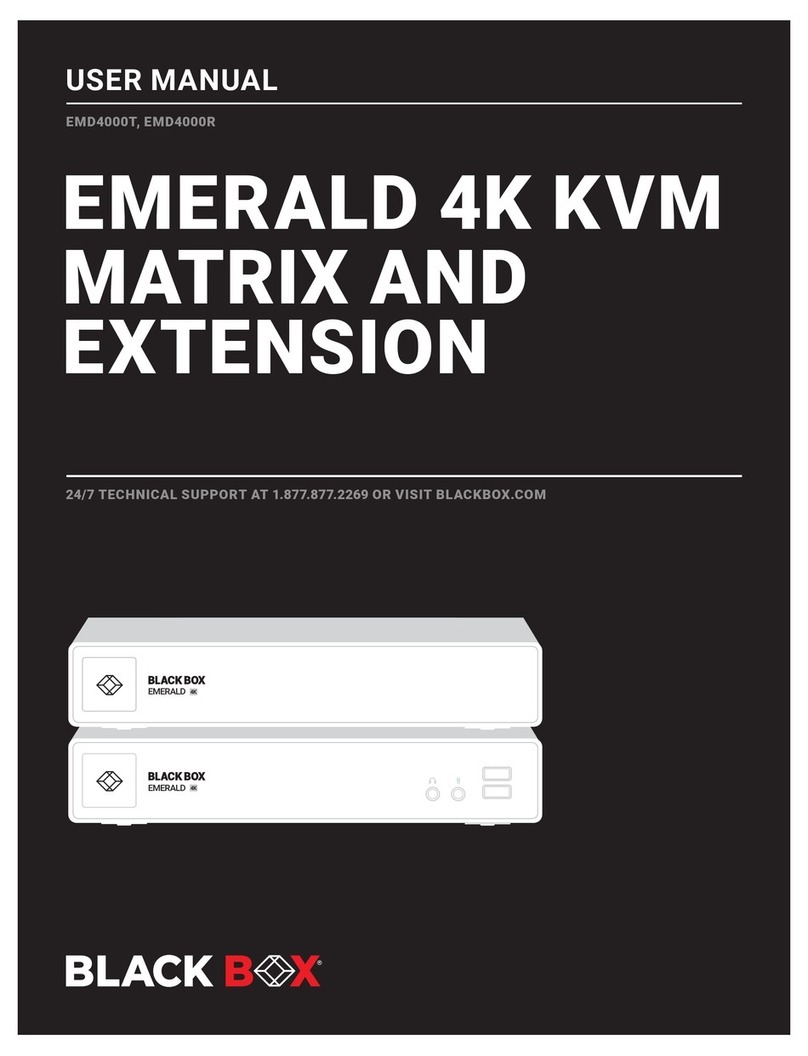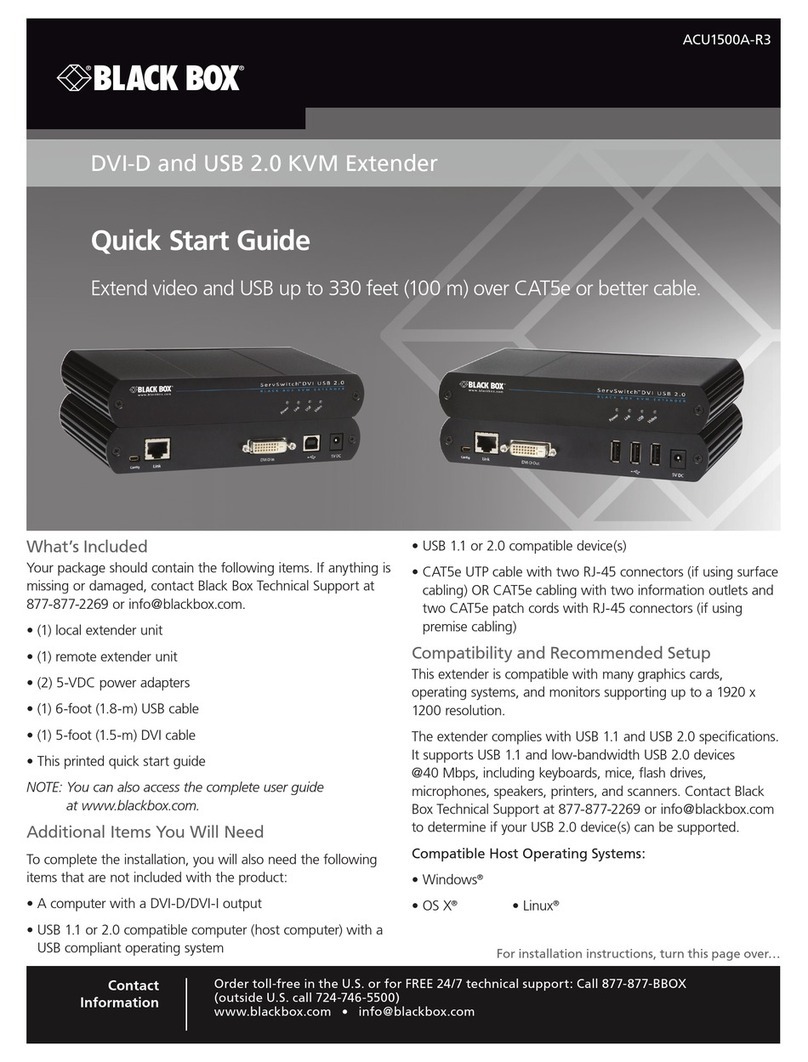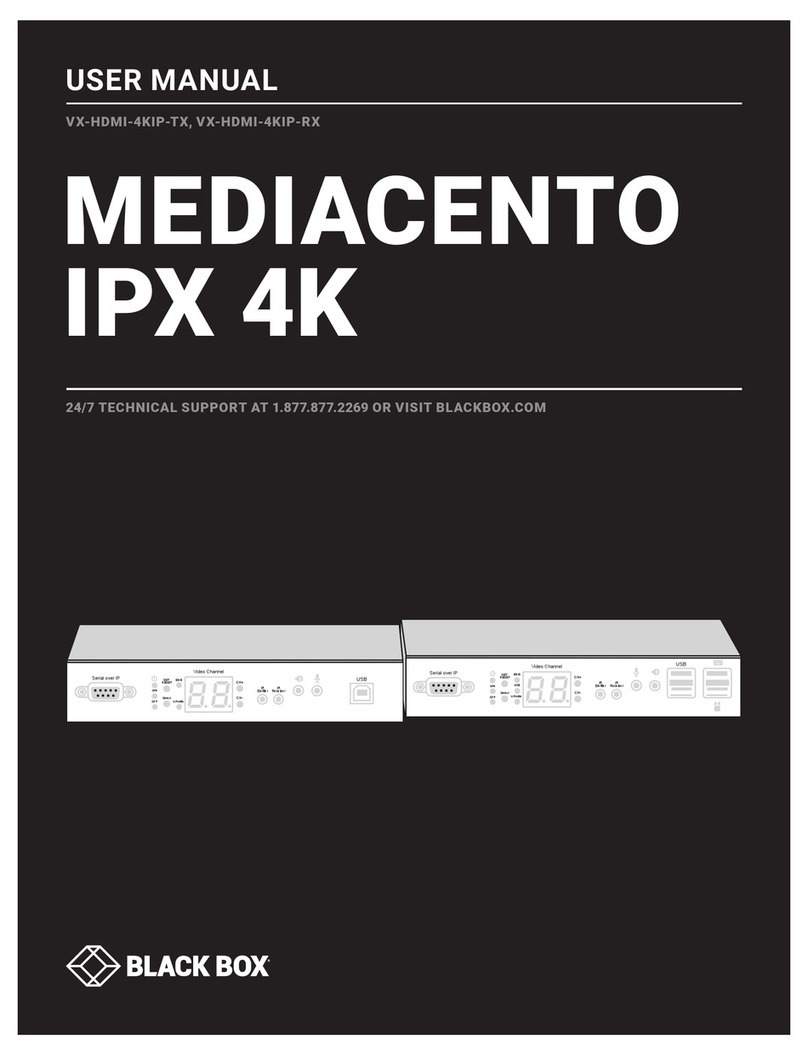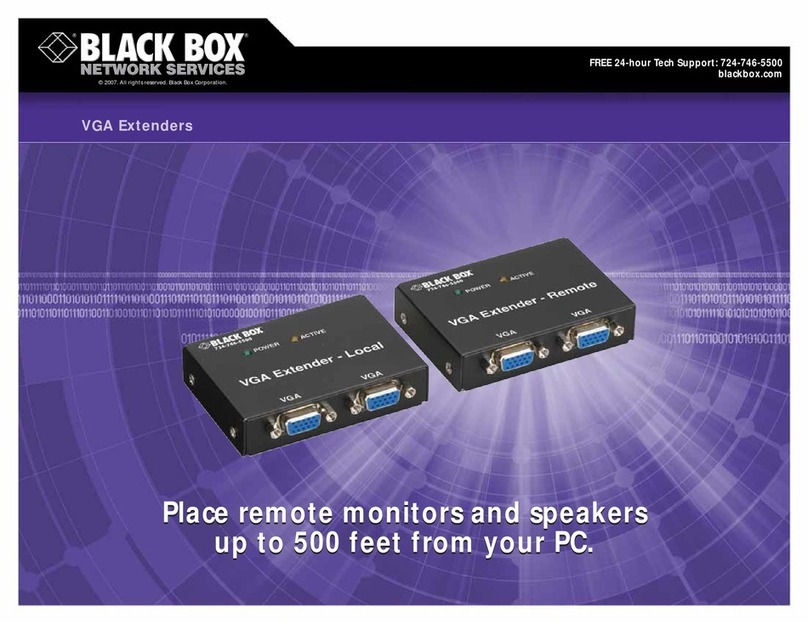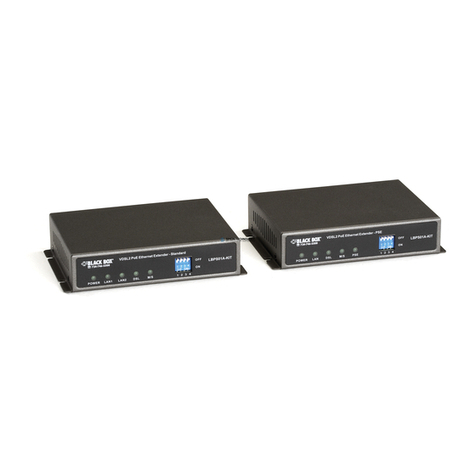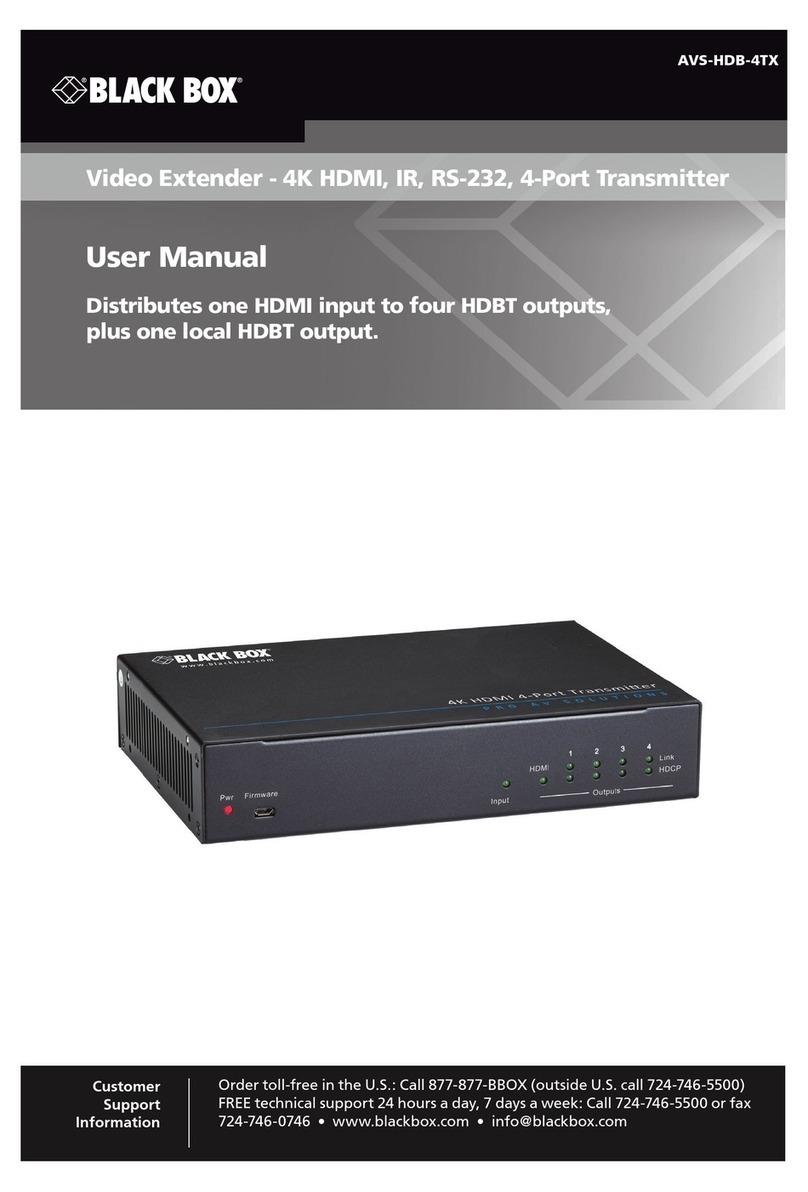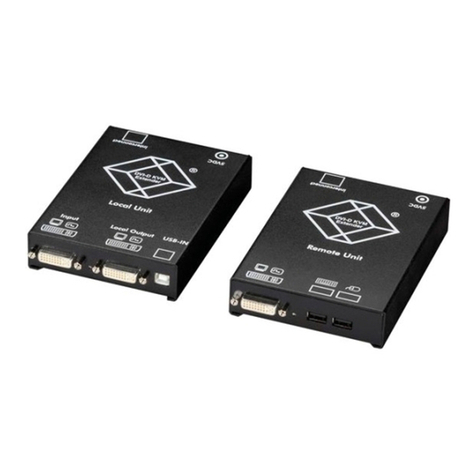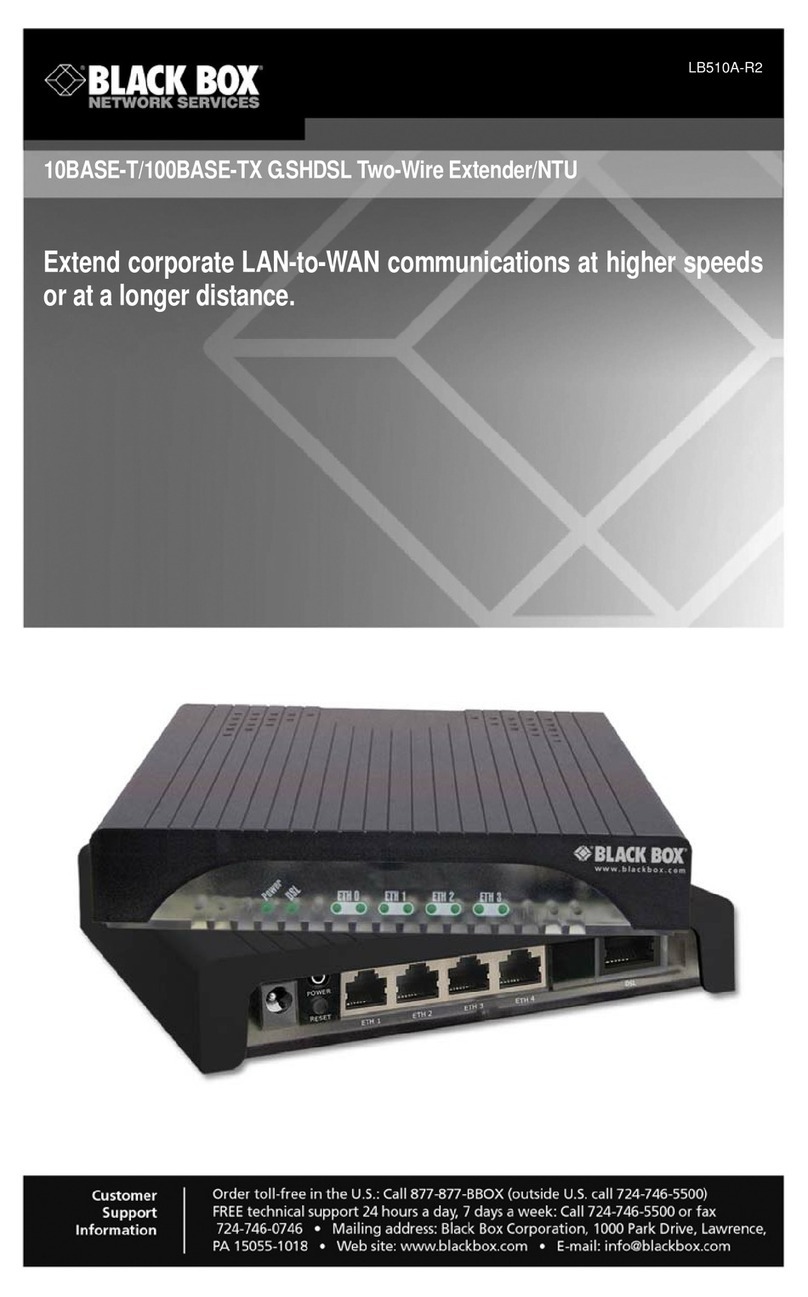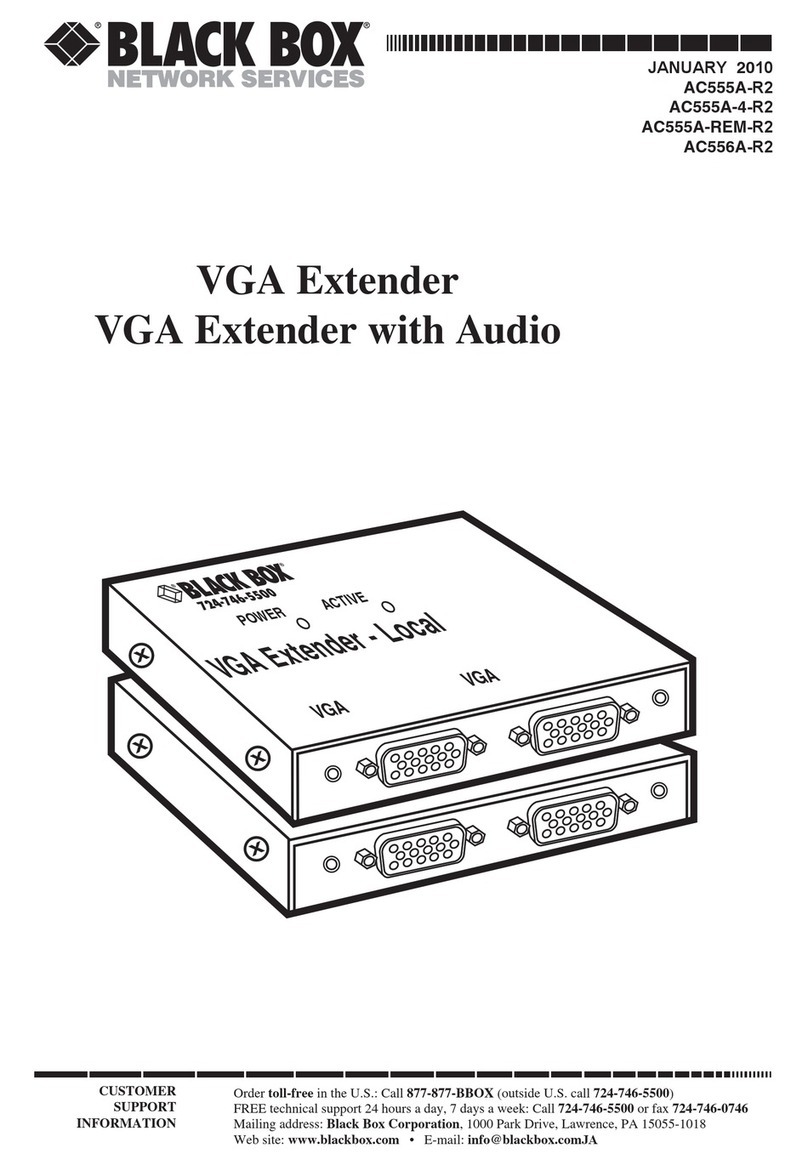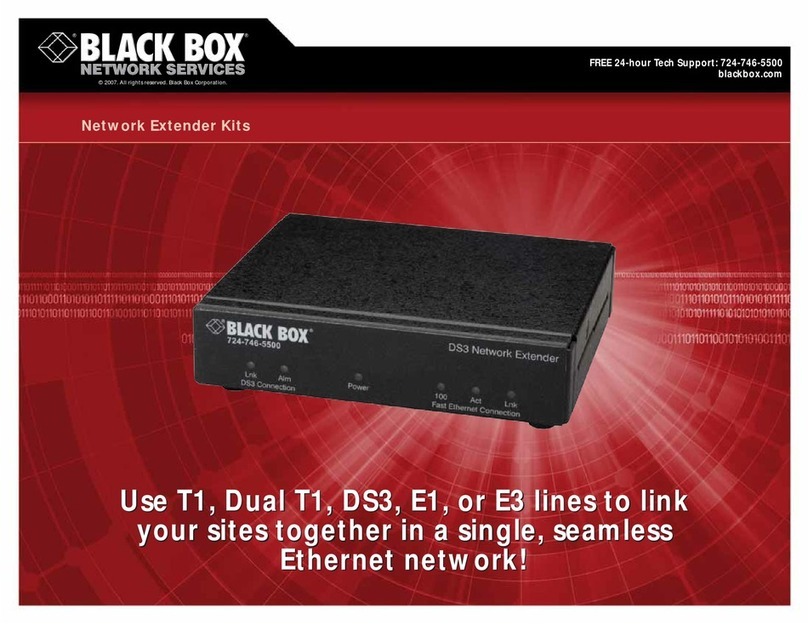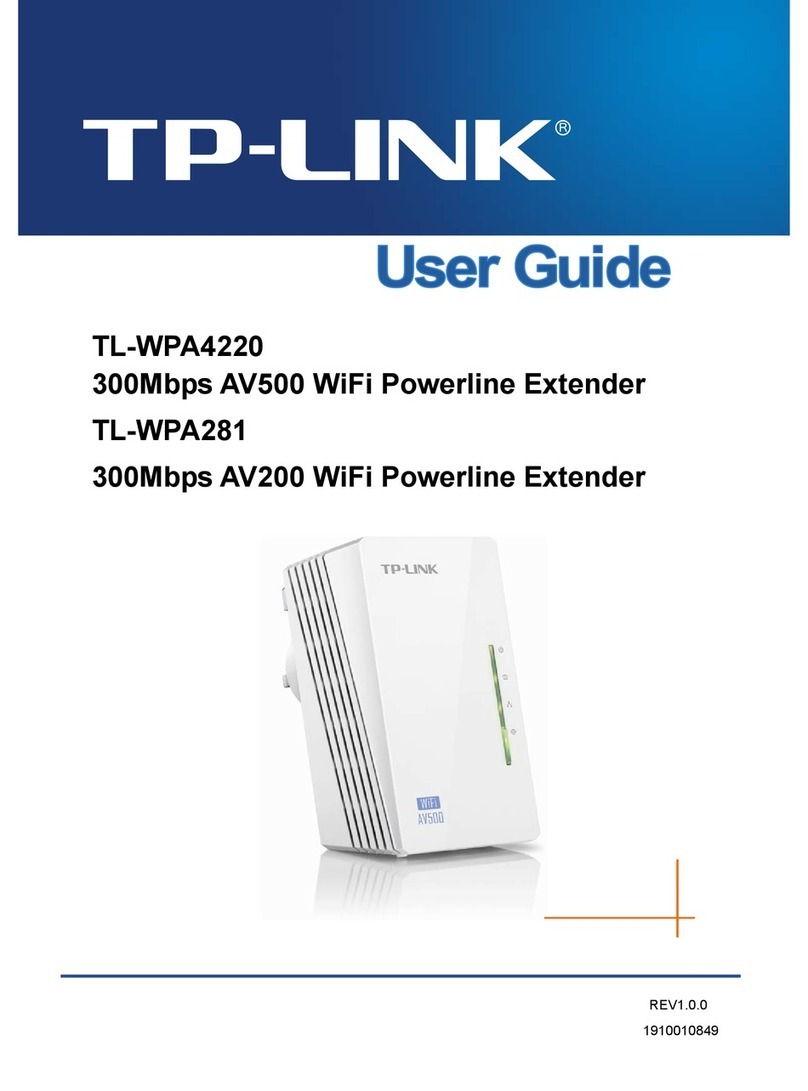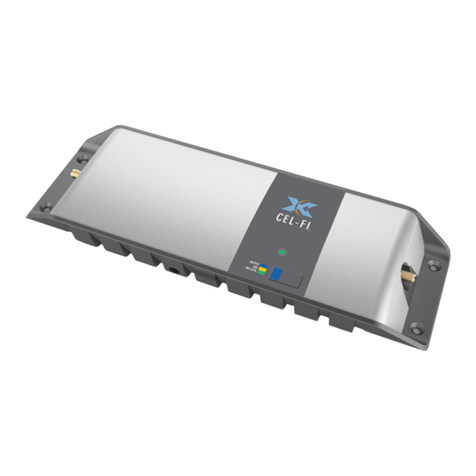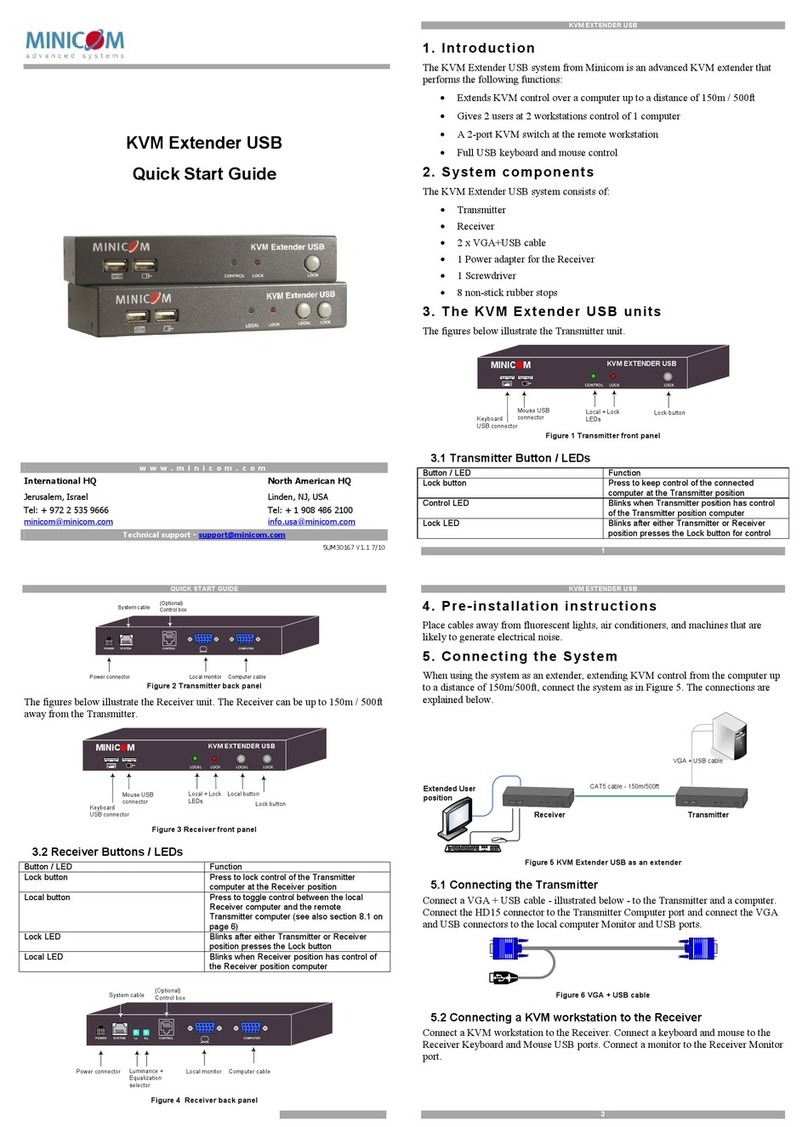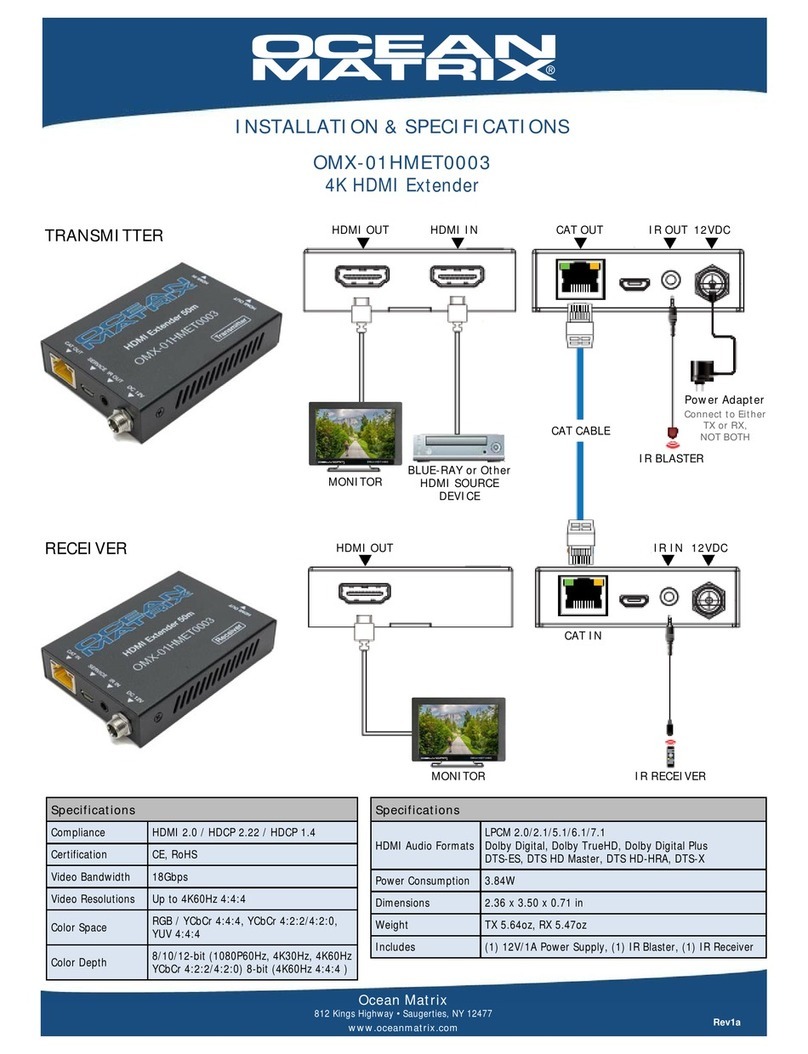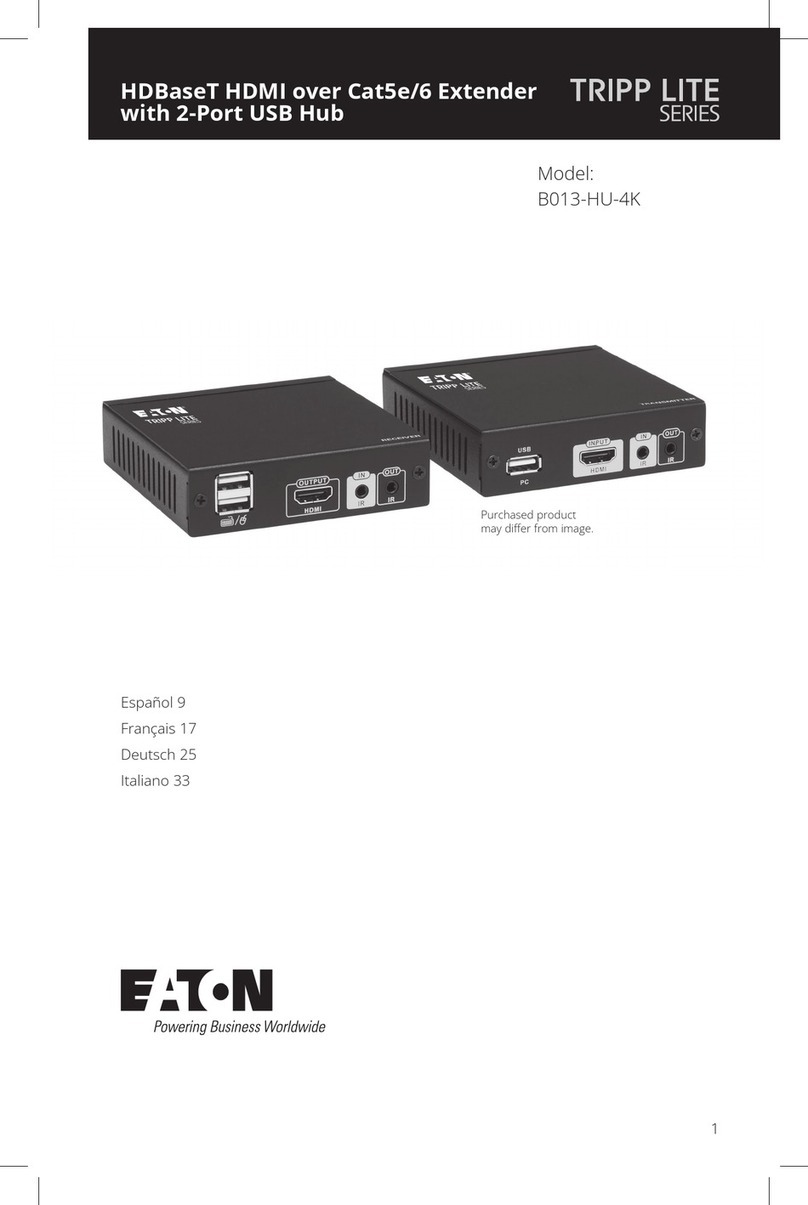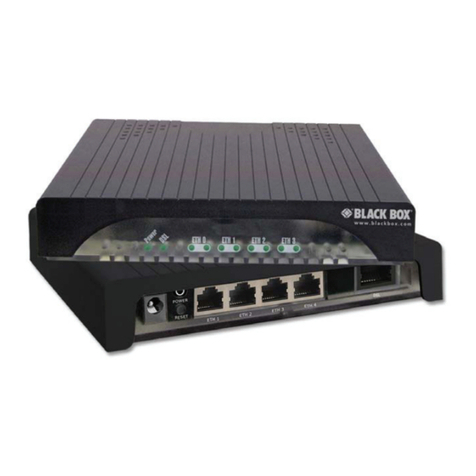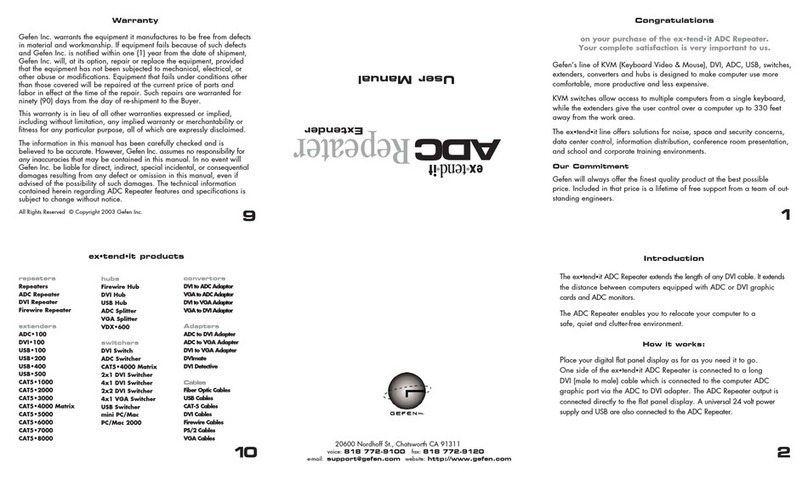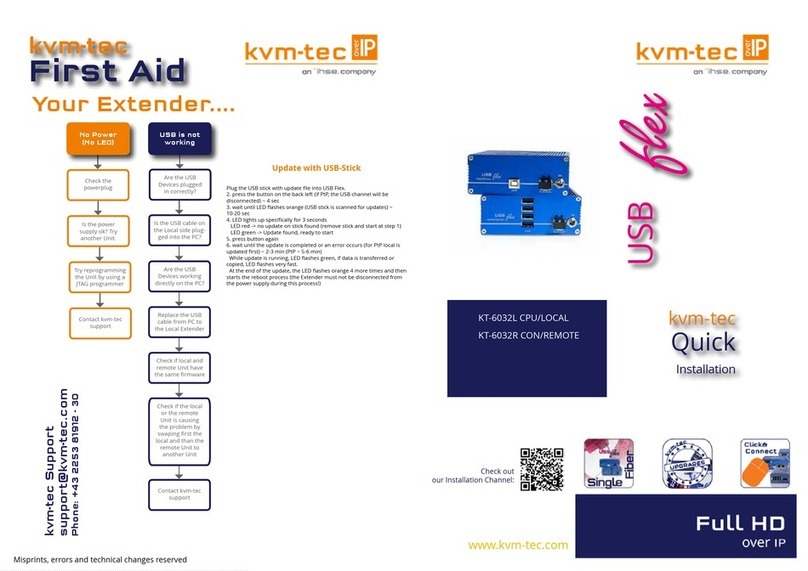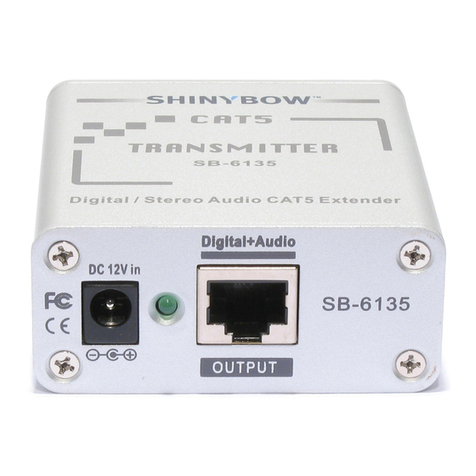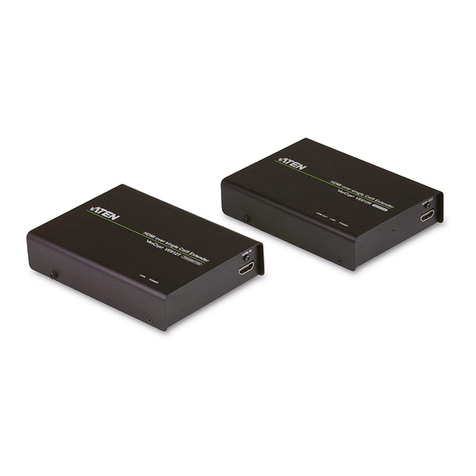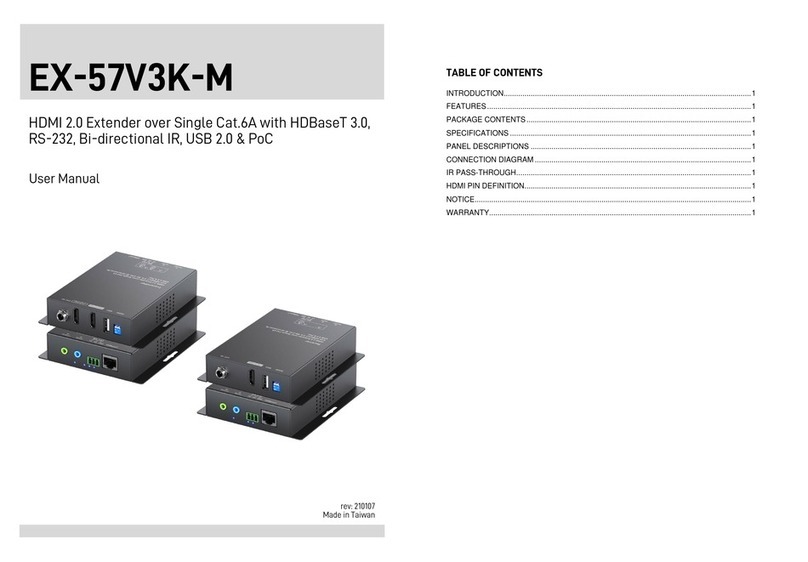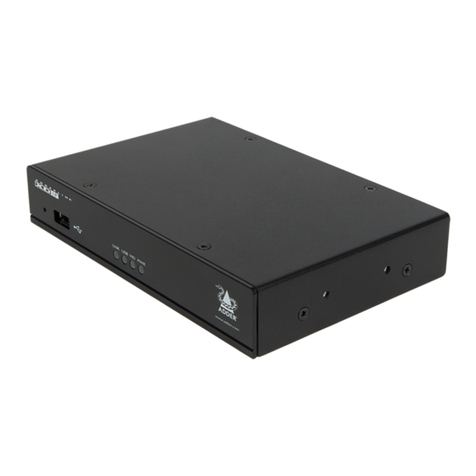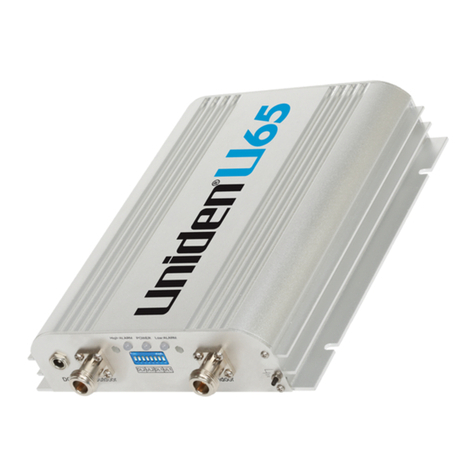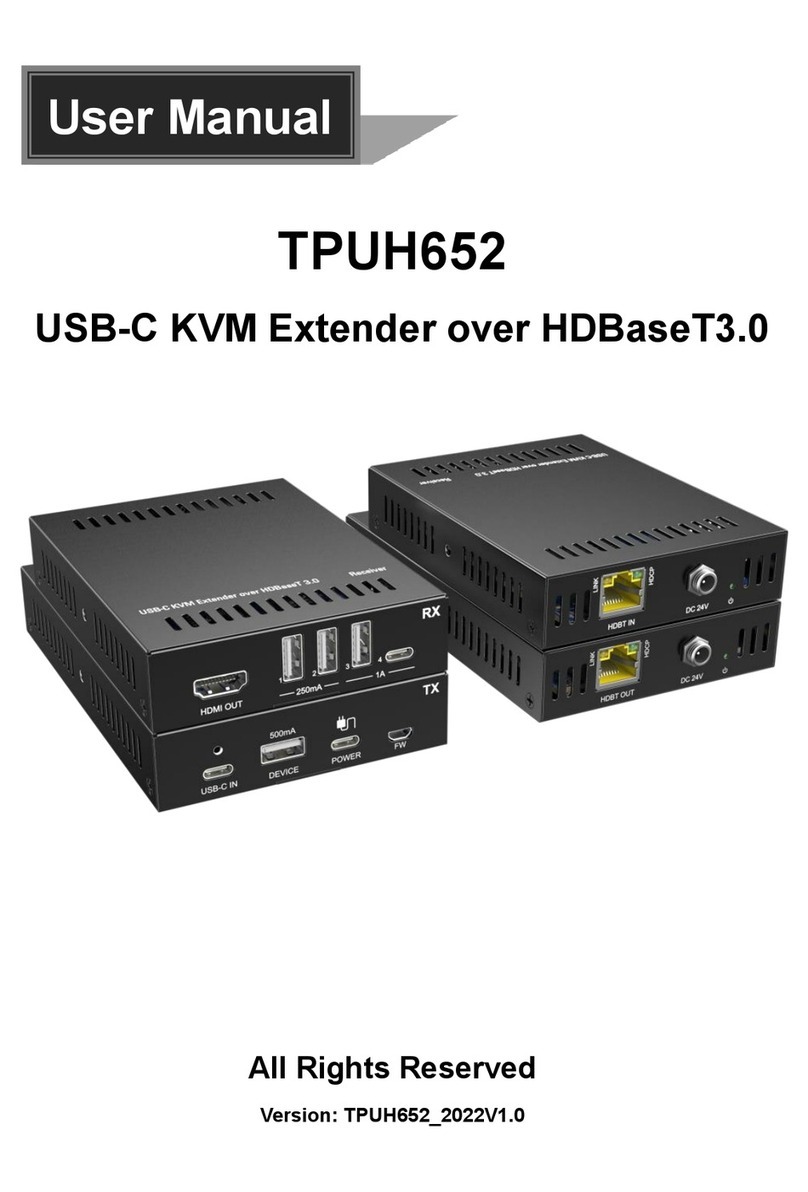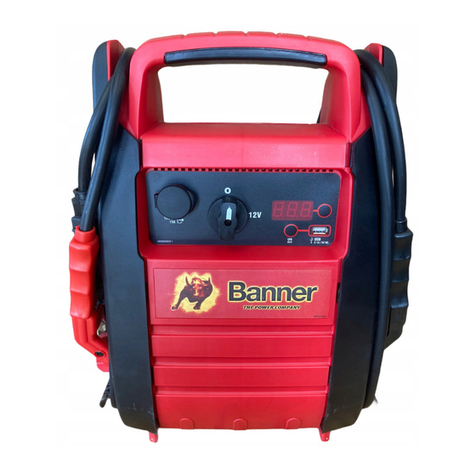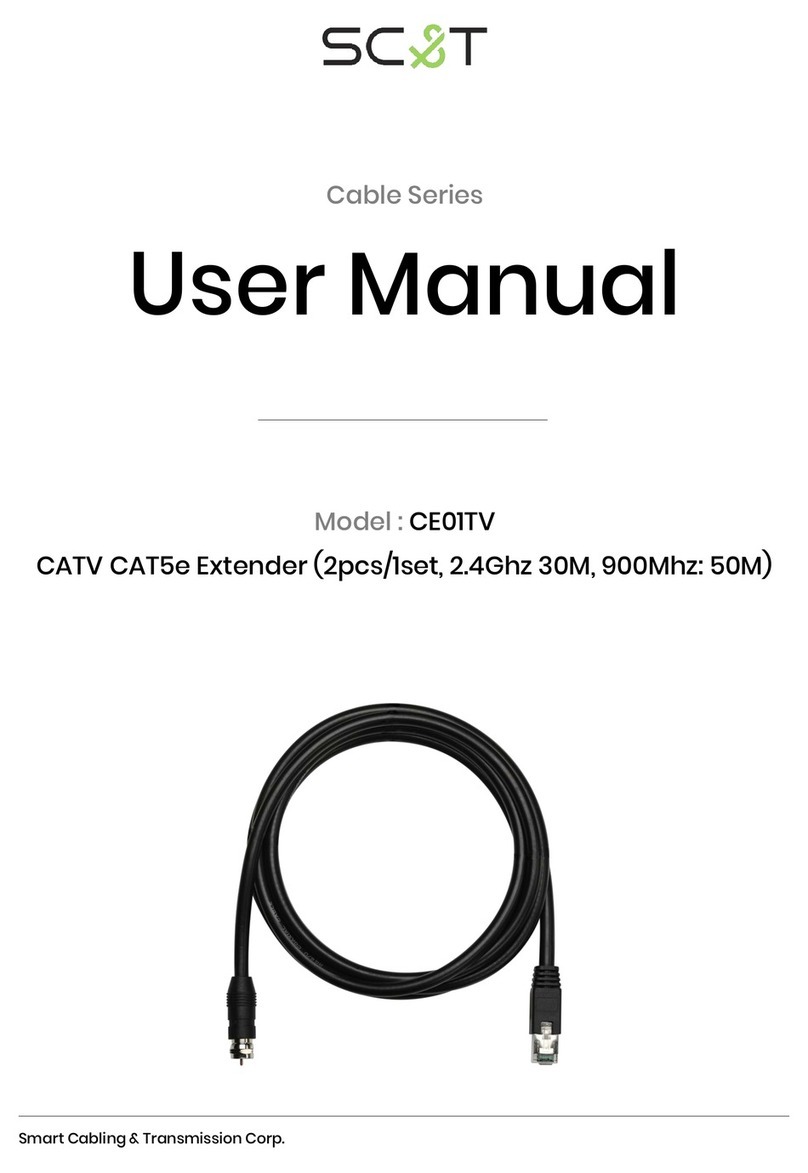
ME771A-M/FSP
Mini Driver MP
DCE DTE
BLACK
BOX
DCE DTE
SPECIFICATIONS:
Protocol: Asynchronous.
Speed: Up to 115,200 bps
Range: Up to 15 miles (24.1 km)
Serial Interface: DB25, male or female (DTE/DCE switchable).
Multipoint: Up to 50 Drops.
Surge Protection: 600 W power dissipation at 1 ms and response time of 1 picosecond.
Control Signals: In DCE mode, DSR turns ON immediately after the terminal raises DTR;
DCD turns ON after recognizing the receive signals from the line;
CTS turns ON after the terminal raises RTS.
Operation: 2- or 4-wire, full- or half-duplex.
Connectors: (1) DB25 male or female; (1) 5-screw terminal block.
Carrier: Switch-selected as either Constantly ON or Controlled by RTS.
RTS/CTS Delay: 8 msec. or No Delay.
Power: No power required; uses ultra-low power ( at least 5 volts required) from EIA
data and control signals: Pins 3,5,6,8 and 9 in DTE mode; Pins 2,4,9 and 20 in
DCE mode; 3 to 5 ma @ 10 volts.
Distance Table in miles
ME771A-M/FSP with
(Surge Protection)
DB25M/F CONNECTOR
+ RCV - G + XMT -
1 2 3 4 5 6 7 8
ON
DIP Switch is on the
bottom side of PC
board
WIRE GAUGE
19 AWG 22 AWG 24 AWG 26 AWG
3.5 2.6 1.4 .9
52.9 2.2 1.5
7.1 4.6 3.5 2.8
96.5 53.9
DATA
RATE
(bps)
115,200
38,400
9,600
1,200
DESCRIPTION:
The Mini Driver MP requires no AC power or batteries to operate. It supports asynchronous RS-232 speeds of up to 115.2 Kbps over one or two
unconditioned twisted-pair wires. It also supports distances of up to 15 miles (24.1) km) at lower data rates (1.2 Kbps, 19 AWG twisted pair).
The Driver can handle up to 50 terminal drops in a multipoint polling environment. For RS-485 and serial printer applications requiring hardware
handshaking, the Mini Driver MP passes one control signal in each direction. You may configure the Driver for high- or low-impedance operation. Set the
carrier to be Constantly ON or Controlled by RTS. RTS/CTS delay can be set to No Delay or 8 msec. The Driver can also operate with or without echo.
The Mini Driver MP also incorporates Silicon Avalanche Diode technology, which provides 600 watts per wire of protection against harmful data-line
transient surges. CONFIGURATION:
You can configure the Mini Driver MP with an eight-position DIP switch and a DTE/DCE switch. The DIP switch is located on the underside of the PC
board. Setting the DTE/DCE Switch:
For your convenience, the Driver includes a DTE/DCE switch on the outside of the unit. If the device connected to the Driver is a modem or mux (or is
wired like one), set the switch to DTE. This setting causes the Driver to act like data terminal equipment and transmit on Pin 2. If the device connected to the
Driver is a PC, terminal, or host computer (or is wired like one), set the switch to DCE. This setting causes the Driver to act like data communications
equipment and transmit on Pin 3.
Setting the DIP Switches:
The eight switches on switch set S1 configure the Driver for RTS/CTS delay, echo mode, method of carrier control, impedance, and 2-wire/4-wire
operation. These switches are located inside the unit on the Driver's PC board. To access switch set S1, use a small flat-blade screwdriver to pop open the
Driver's case.
Functions of the Configuration Switch:
The descriptions below detail the functions of the eight configuration switches. Read this information carefully before setting the switches.
S1-1 and S1-2: "Transmit OFF" Impedance. Switches S1-1 and S1-2 are set together to determine whether the receiving device "sees" the impedance
of the Driver's transmitter as being "high" or "intermediate" when the transmitter is turned off. The "intermediate" setting is useful in half-duplex environments
where the receiving device does not respond well to the "high" setting.
S1-1 S1-2 Setting
ON ON Intermediate Impedance
OFF OFF High Impedance
S1-3: RTS/CTS Delay: Determines the amount of delay between the time the Driver "sees" RTS and when it sends CTS. Note: RTS/CTS Delay setting
should be based upon transmission timing.
S1-3 Setting
ON 8 ms
OFF No Delay
S1-4: Echo Mode: Determines whether the Driver echoes back to the transmitting device (half-duplex mode only).
S1-4 Setting
ON Echo ON
OFF Echo OFF
S1-5: Carrier Control Method: Determines whether the carrier is "Constantly ON" or "Controlled by RTS". This setting allows for operation in switched
carrier, multipoint, and hardware handshaking applications.
S1-5 Setting
ON Controlled by RTS
OFF Constantly On continued on next page
